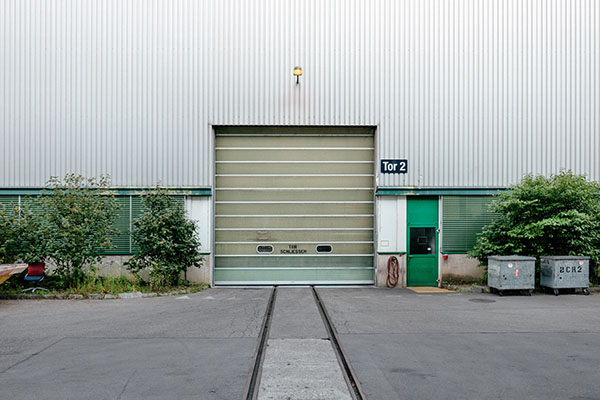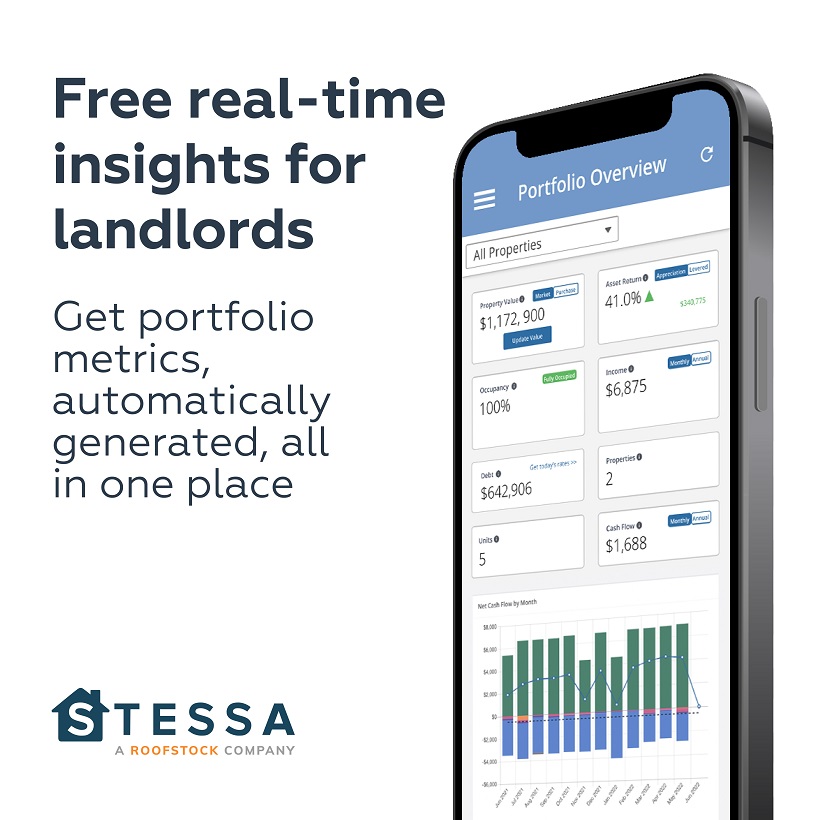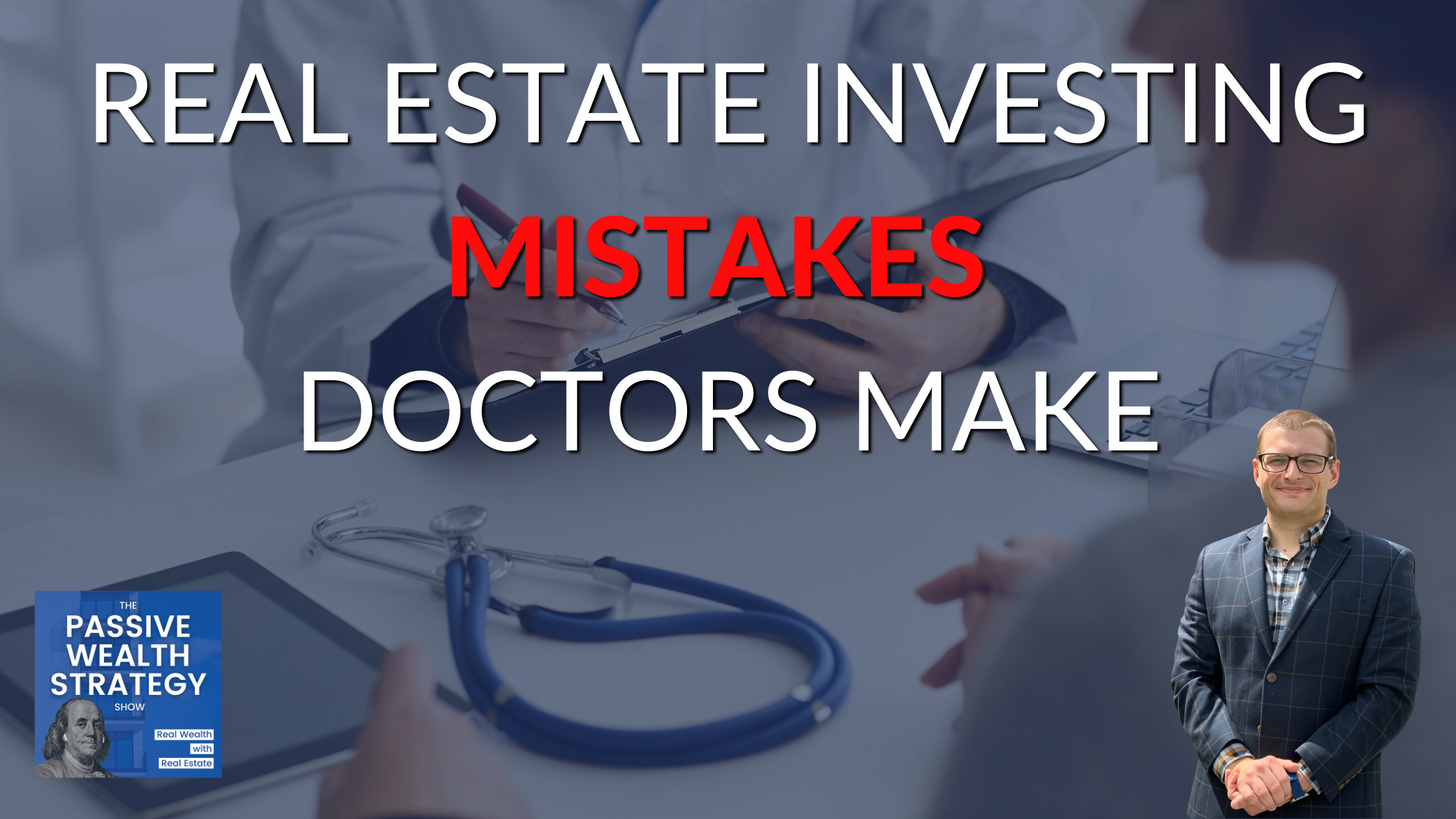Greg Dickerson from Dickerson International on Commercial Real Estate
Commercial real estate investing can be a bit tricky, but if you know how to deal with it then you can surely close more deals than you believe you could. Serial entrepreneur Greg Dickerson talks about commercial real estate investing in multifamily properties and in a variety of asset classes. Investing in commercial properties requires more than just money. It also needs the right knowledge about marketing and analysis. Thus, Greg highlights education as the biggest thing you should invest in for your personal and professional development in the world of real estate.
—
Commercial Real Estate Investing Beyond Multifamily with Greg Dickerson
I’m here with Greg Dickerson. Greg is a very accomplished real estate investor. He’s bought, developed and sold almost $300 million worth of real estate over his many year’s career. He’s based not too far from me. He’s in Charlottesville, Virginia. I’m here in Richmond. For those of you who will make it to the meetup, we’re looking forward to having him speak for us here in Richmond later this year in 2019. We’re going to talk about a variety of real estate asset classes. It’s going to be a great discussion because Greg is highly experienced in all of them. Greg, there are so many asset classes. We will talk about probably multifamily, self-storage, mobile home parks and any others that you want to discuss. My first question to get us started and it’s probably going to be a tough question is, “What is your favorite asset class for investing?” Considering the various risk profiles and the current market conditions, what do you prefer?
I’m a developer, first and foremost, I’m opportunistic. I approach things a little differently. If I were a passive investor, cashflow investor, buy and hold investor, I think multifamily is probably the safest type of real estate. Within multifamily, probably A and B are the safest asset classes to be in. I know that’s contrary to what a lot of people think but in an economic event, those are safer, better and more insulated assets than C and D assets, from all of the things that can affect that renter. I’ve always liked multifamily. People need a place to live first and foremost. No matter what the economy is doing, people need to pay rent. They have to live. Even if our complete economic monitoring system collapsed, you could trade chickens for rent. You could trade services for rent. If you own real estate that people need and that they have to live in, you have something you can barter with or something you can trade.
Within commercial real estate, there are six types. You have a multifamily, office, retail, hospitality, land and industrial. Those are your six types of real estate. Within that, you have class A, B, C, D. There are some Es and Fs too, but we don’t talk about those. This is all location-based too. I don’t like multifamily in every market and every location. Real estate is hyperlocal all the way down. When I say hyperlocal, what I mean is it’s down to the block, the street, the neighborhood. If you asked me what do I like in this neighborhood in Richmond, Church Hill, it might be different than what I like. I’m very scientific and detail-oriented when it comes to my approach to the types and classes of real estate, I like all the way down to the neighborhood level. I will qualify all that but on a general national scale, multifamily is good. Retail and strip center would probably be second.
Everybody, no matter what the economic cycle is, they need the core services of dry cleaning, nails and hair. They’re going to get their coffee. They’re going to buy donuts. They’re going to get Chipotle. Those people are going to weather an economic storm. If your salary gets cut in half, your stock portfolio goes out the window. You’re going to buy a $10 burrito instead of going to Outback or Ruth’s Chris or something like that. You’re going to go to the fast, casual, cheap places and you’re going to do that because it’s the only thing you can afford to do. Those are going to thrive. The McDonald’s, the Chipotles and the Paneras of the world, they weather economic cycle. They can lower their prices to meet the demand in an economic event. Those are the core assets that are going to do well, regardless of the economic cycles.
Mobile home parks are great. The problem with the mobile home park is you need a lot of lots because it’s a cheap lot for rent. You need big parks and there are not very many third-party management companies out there that efficiently and effectively manage those. You have to build that infrastructure. I love the asset but I don’t want to operate. I stay away from those. Storage is great. Storage weathered 2009 pretty well. That’s area-specific. It depends on the market you’re in and the demand. If you can find storage facilities in markets that are in demand or build them, those are great assets to own. You’re not dealing with tenants. You’re dealing with personal property. People are different about those things. They put stuff in there, they lock it up, they forget it and the money flows. Those can be some great assets. You need big ones because they’re cheap rent at the end of the day. You need 1,000 mobile home lots to make any nice cashflow, whereas a couple of hundred apartment units can generate a lot more cashflow than 1,000 storage units.
The problem with the mobile home park is you need a lot of lots because it's cheap. Click To TweetStorage units are a little bit easier to deal with. Lot rent is a little bit easier to deal with than an apartment. You don’t have the turnover. You don’t have a lot of the personal issues you can have with the multifamily. When it comes to the office, I like the type of office that a professional needs that cannot work out of their house. When you think about who can’t work out of their house, you’re talking about doctors, chiropractors, dentists, orthodontists, periodontists, physical therapists and things like that. Maybe some of them could but some hairstylists can’t always work out of their house, but that’s not an office, it’s more retail. You want to think on that level, who can’t work out of their house? Those are the types of office buildings and office properties you want to own. It all depends. Downtown Charlotte, New York, LA, your core markets, your primary markets, a lot of those asset types and classes are pretty safe because those are pretty big companies and they need some office space.
You’ve got to pay attention to where we’re going as an economy and as a society as it pertains to real estate with the outsourcing that’s going on, with the co-working office situation that’s going on. Every Starbucks now has a coworking office that just happens to serve coffee. I don’t think they ever realize what they were going to become. You’re renting office space, you’re not drinking coffee. It’s an interesting business model and then with Amazon and all the other online purchasing in the retail sector. That’s my general philosophy. It would probably be multifamily first. It would probably be a mobile home and storage second, retail would be third and office would be last. I’m going after a professional office that cannot work out of their house.
There’s a lot to cover there. We could make a blanket statement with any of these asset classes across the board. We could put that topic to bed. Location is always important no matter what you’re investing in. As we work down the list a little bit and we talk about multifamily all the time here on the show so we will skip that for now. You’ve got some important skills and knowledge that I want to make sure we cover at our time together. Retail, you talked about that and you mentioned Amazon, you mentioned the change in the times and everything.
How do investors secure themselves and also feel secure about future-proofing their retail investments? Historically, most people have been wrong about projecting the influence of online retail on our society. The people that accurately predicted, “You’re going to be ordering your groceries through your phone in ten, fifteen years,” they were not buyers. When you talk to anybody, “No, that’s never going to happen.” Amazon just bought Whole Foods and you can order your groceries online. You can still pick them up but to avoid rambling, how do you accurately predict the future of retail investing?
You’ve got to look at what are the core services that aren’t going to go away. Food delivery goes way back. There were these food trucks where people ordered food not online, but they didn’t go to the store to get certain things. Generally speaking, people are going to get produce. They want to pick that. They’re going to get their meats. The interesting thing is how the big grocery store may or may not shift. There are still a lot of the population that can’t buy online and won’t buy online when it comes to food. Grocery anchored centers are very insulated. You’re going to need grocery stores and that whole landscape is changing.

Walmart is still in the little neighborhood grocery centers, people don’t realize it but they’re the number one grocer in the country, maybe in the world. Definitely in the United States, Walmart is the number one grocer and their number one item is bananas, believe it or not. Grocery-centered retail stores and the little things that people need. The core services that aren’t going to go away. People are going to need that dry cleaning done. People are going to need their hair, their nails. They’re going to need the food items, the coffee. When you think about those types of things, you want to be smart. You want to be where they’re in demand, where there are a lot of rooftops to support that. If there are not enough rooftops, you don’t want to build our own something where there is very little support.
You want to make sure there’s traffic, there are built-in drivers and demographics that are going to support that retail use. That’s how you insulate yourself against any kind of downturn. You make sure that the tenant mix in the building will not be able to be outsourced or become obsolete. There’s always going to be a certain amount of people that want to buy clothes and try them on. I don’t buy clothes online. Even though I know what I like to wear, it’s the same pair of pants and the same shorts. I still like to go to the store because each pair fits a little different. I hate ordering something and then having to return it, even though it’s that simple. You put it back in the box and put the label they give you.
I’d rather go to the store, try it on one and go. I want to get what I need when I leave. There are still certain types of things in every retail environment that are going to thrive and survive. The retail mall landscape is going to be interesting to watch. I went from the enclosed mall. Those are dying to the outdoor mixed like a short pop town center thing where you’ve got mixed-use if you are living above, retail below and a little bit office. It’s going to be interesting to see how those power centers and those outdoor lifestyle centers change as the economy evolves. Grocery stores aren’t going away. There are going to be a lot of people ordering a lot of things online, but some of those core things that people still like to put their hands on touch, smell, thumping the fruit and listening to it. People like to do that. They’re still going to be around.
More and more people are ordering online and picking it up, not getting shipped, but grocery stores are delivering. They are essentially going to become retail outlets for the Amazons. What Amazon did in buying Whole Foods is they’re trying to get closer to you as a distribution center facility. Their whole model is able to get it to you quickly so that they can gain market share. That’s why they bought Whole Foods. They’re also changing the model now where you put it in your cart and it scans on your phone. You don’t even have to check out anymore. I don’t know about you, but I use the self-checkout pretty much every time I go to the store because I go every day, I get it fresh.
That thing is changing with people. There are more and more people shopping like that where they’d get something fresh or a little bit of stuff every day. They might get core staples monthly or weekly or whatever but I go every day. I’d drive by the store. That’s the other interesting thing. The most popular residential neighborhoods are the ones that are located close to grocery stores. People want to live close to that so they can do that. Those are the things to watch. You watch the trends. What are you doing? What are the people that you know doing and watch their behaviors like Warren Buffett? He invests in companies that aren’t going anywhere. Coca-Cola, Pepsi, companies that have been around forever, that everybody uses, everybody needs that are pretty much safe. You’ve got to do the same thing in real estate. What is not going away? What can’t be outsourced? What can’t be taken online completely? You have to think about it.
Those are all good points. You mentioned about wanting to feel the produce and such. I relate to that. It’s not that big of an inconvenience to go and look at the lettuce I’m buying or something like that. We will see how that changes. In the passive investing side, when you’re maybe investing in retail syndication, what do we look for in a retail syndicator or retail syndication opportunity to mitigate some of that risk and make sure they’ve done all of their proper due diligence? What are some steps we can take there?
Due diligence is more than just the number. It goes all the way down to the type of asset, the class of asset, the neighborhood it’s in, the year, age, type of construction, deferred maintenance and all of that, as well as the numbers. Just like any syndication or any operator, you want a solid operator that has a track record that’s had some successful exits. That’s the one thing that a lot of people forget. I can get up there and say, “I’ve got $400 million worth of assets that I bought this year.” I don’t have any exits. I don’t have any proof of return of capital, much less return on capital. You want somebody that has multiple exits, has a track record of not only returning capital because when you’re doing passive investments and if you’re already syndicator or operator, your investor is number one. A lot of people don’t realize this, the first thing is that their investor is interested in is the preservation of capital. That’s the first thing. It’s not making money, “I don’t want to lose any money.” That’s number one.
Once you’ve satisfied that, then tell me how I’m going to make money. Once you satisfy that, tell me who else you’ve made money for. In an operator, that’s what you look for. People that are organized, efficient, professional and they respond. It’s all the little things. How quickly do they get back to you? How are they with answering your questions? Do you get along with them? Do your personalities match? Do the types of assets they’re buying interests you? Some people love Class C and D, some people want As and Bs. The higher net worth individuals are looking for bond properties. They’re looking for the A and B properties that are more insulated. They want the preservation of capital. They’re looking for the nicer assets that aren’t at risk in any economic event. Generally, you can tell a lot about an individual by how they respond. How quickly do they get back to you? How do they get back to you? How did they write an email? What does the email look like? How does their phone message sound? How do they present themselves? How do they talk? How do they dress? All of those things will tell you a lot about an individual. Those are the things I look for in operators that I do business with.
I’m big on the email responsiveness. That goes a long way for me when I’m passively investing if folks are on top of it. I don’t need an essay in an email response, but something that answers the questions and is sufficiently thorough and quick is fantastic.
Timely is the key.

The next asset class that’s not multifamily is particularly of interest to me here and I’d loved to pick your brain about is self-storage. I started investing in that myself. I like the business a lot. You’ve been around far longer than I have in this real estate investing world. Where are we now in the self-storage compared to where we’ve been in the past, this market cycle? Generally, what can we look out for it? Let’s get into that.
The thinking nationwide is that we’re undersupplied. That’s what the data would tell. There are many square feet of storage needed per person in the country. I can’t remember what that is, maybe 300 square feet per person or whatever per thousand people. I don’t have it in front of me, but those numbers are easily found. How much square feet of storage is required per population base? Those numbers will tell you that we’re undersupplied. There’s a lot of stuff in the pipeline, a lot of stuff in development. It’s a fragmented market, meaning there are a lot of small owner-operators spread all over the country. There are a lot of opportunities. A lot of those owners are older and they’re retiring and they’re divesting themselves of those assets, which creates unique opportunities because they have had that cashflow their whole lives and they don’t know what they’re going to do with lump sums. A lot of them are willing to finance because they want to keep that cashflow coming in. There are a lot of creative deals that can be made on the mom and pop storage facilities. A lot of REITs are getting in the game and have gotten in the game.
I have some friends in the business at a very high level locally. They go to these REIT conferences and these self-storage conferences where all the high-level people go that own thousands of not just units, but facilities. The days of the CO deals are gone. REITs are not buying CO deals anymore. They want to see stabilized occupancy now. Whereas the REITs were gobbling up. All you had to do was build it and get a CO. You could sell it to a REIT and make a good cap rate flip without it because they were going to come in and fill it up and operate it. They’re not doing that now. They want to see it up and running. They want to see it stabilized to 50% occupancy before they’re doing deals. They’ve backed off of it.
Things are changing a little bit in the world of self-storage from the institutional buyer. They are changing the way they look at things. It’s an interesting business. It’s a retail business. A lot of people don’t realize that self-storage is retail. Location is very important. There used to be only so many storage facilities around, people would put them in the paper or craigslist or whatever and they could get away with that. Now, especially the single mom or the older people, they don’t want to go down some dark gravel road or some back area behind some industrial warehouse and go in and out and store their stuff. They want to go where Walmart is. They want to go next door to Walmart. They want to go next door to the retail stores in the corridor. That’s why you’re seeing self-storage start popping up in more retail locations. The statistics are 70% of the storage facilities that get leased now is by drive-by traffic.
You’re seeing websites come around now where they’re starting to develop websites for self-storage. People are putting a lot of emphasis on marketing the self-storage facilities, making them look better and inviting, the curb appeal and safe. People want to feel safe when they’re in a self-storage facility because oftentimes, you’re in this huge thing and you’re by yourself and especially the indoor facilities, people don’t feel safe. You want to look for the assets that people are going to feel safe in, that are well-monitored, well-lit, well maintained, in terms of the stabilized assets. Your value-add is to find the ones that aren’t and make them such. You can find some efficiencies in operations. Generally, you have self-storage facilities, the old mom and pops.
Always observe market trends. Click To TweetThey have a manager in there that’s usually not on the ball. They could care less about customer service who’s coming and going. They’re getting their paycheck. The first thing you do is turn that around and then you offer the ancillary services of maybe U-Haul, moving and storage supplies, moving and storage business, truck rentals, things that can complement it. There are a lot of little things you can do to monetize self-storage facilities and add value and increase the NOI on those things. Visibility, your website presence, your marketing, the curb appeal, safety, comfort, those are the big bullet points now that people are looking for in self-storage that wasn’t even on the radar many years ago.
You threw out something a little bit that I want to clarify. CO, meaning Certificate of Occupancy, those kinds of deals.
A CO deal in the commercial world, a lot of times those deals are struck. Let’s say you’re going to develop a self-storage facility or any commercial property. There are and were equity funds and institutional investors, REITs, that Real Estate Investment Trust from Wall Street that would buy those deals before you even start. They would make a contract with you at a price that you’re going to build it, deliver it so your payday was assured upfront. You just had to build it and deliver it for the number that you think so you can make some money. That changed because a lot of people weren’t making money. They were underestimating their costs and overestimating their timeline with construction costs escalating of the last few years like it has and timeframes increasing because of the labor shortage.
People started switching to CO deals where you had to build it, get your Certificate of Occupancy to where it could start taking on tenants, renters and lessees and then they would buy it. They wanted it done completely because they were buying some facilities that weren’t getting finished. A couple of the last big meetings and you can look this up in Google if you’re interested in this space, the REIT and equity funds are backing off of those CO deals. They want to see stabilized assets to at least 50%, a lot of them. There might be a few out there, but the theme is they’re backing off of those CO deals.
As far as the range of size of self-storage properties that most syndicators are investing in or we’re not necessarily competing with REITs in terms of acquiring properties. Where does that fall in self-storage? My understanding is it’s very different from multifamily.

The bigger facilities are what the REITs are after. Everybody has different thresholds. Some will go down to 100,000 square feet, some want to see 200,000 or 300,000 square feet. Every buyer is different on the REIT side. Typically, they want better quality assets and the bigger assets because they have a lot of capital, they have to move. They’ve got to do the bigger deals. They have to do nicer deals because their investors want a safe haven. They’re buying a bond. They want to know their money’s going to be okay. Whereas the average investor should look for anything that’s privately held, no matter what the size is. If you’ve got an owner-operator, mom and pop, and if it’s off the radar of the big guys and all you got to do is go to this big self-storage operator websites and you will see what their criteria are and do the opposite.
Be contrary to what they’re doing and go underneath what they’re looking for and you’re not competing with them and they pay a lot of money. They’ve got sophisticated data and analysts out there sourcing those deals, but they’re not looking at the mom and pop deals that are 50,000 square feet, 90,000 square feet. Some of the smaller ones that are in the backwoods a little bit or off the beaten path that is occupied and they’re doing well. You’re going to have to work a little harder to keep them full and compete with the new inventory in the pipeline. The other thing I would do is I would know your market. I would know what’s coming, what’s in the pipeline, what are the rules? Where can self-storage be developed? Is that coming online? In general, if you buy something older and it’s occupied, people don’t want to move their stuff.
They’ve had it there for years. Generally, you’re going to be safe. If you have something that’s a value-add and you’re buying something that’s 50% occupied and you’ve got brand new facilities that you’re competing with, those new facilities are usually REIT or equity-backed facilities. They can lower rates and put you out of business. You’ve got to be mindful of that and you’ve got to watch that. Don’t assume that because it’s 50% vacant that you’re going to be able to come in and turn it around without having to do some very heavy lifting and be extremely compelling and competitive and get the word out about that facility. You’re going to have to offer some serious incentives but if it’s fuller, people aren’t going to move. They leave their stuff in there and they forget about it. They don’t want to mess with it.
A deal I invested in passively, I acquired from mom and pop owner. They hadn’t quite kept up and they had normalized a lot of their rents and still got a special on their first-month rent. The rent was never raised to what the market rent was or the rents they were getting on the same units or somebody didn’t get a special. It was 50% to a third of what that normalized rent would be. You come in and you make that change. If your occupancy doesn’t fall drastically, that’s a huge bump to your NOI before you start getting in and making changes. There are opportunities but you need to be very careful about the supply in the market and doing all that market level due diligence.
The play down the road for some of these is you can buy some of these facilities that might be an emerging area and the land is prime development land. You buy the facility and you cashflow for a little while until the land becomes more valuable than the cashflow at the facility then you redevelop the land or you sell it to another developer. There are a lot of those types of deals happening in your market and mine where redeveloping place are coming about. Sometimes it’s a facility that has extra land that you could put something else on it, whether it’s more self-storage. The other thing too is to look at the trends. It’s busy in construction right now.
There are a lot of big manufacturing resources. The co-working thing is working in industrial as well. Small office warehouse spaces are becoming very popular. Most storage facilities, the drive-up doors are renting first. People want that exterior entrance with the roll-up door versus the interior. If you start looking at it from that respect, what is the demand for small commercial office-warehouse space? If you can convert or add that to a facility that you’re already doing, sometimes your storing RVs, boats, motorcycles and things like that, but turning them into more office warehouse office types of things and using them in this small business warehouse operations. Zoning comes into play there and permitting and stuff like that.
You’ve got to look beyond what’s there and think, “What is the highest and best use?” Maybe you can add some mobile homes to the back of the storage facility in the area that you’re in if they allow that. Maybe you can build some housing. Maybe you can do an office building or whatever. You’ve got to think, “What else, where else and how else?” When you’re looking at any property, “How else can I maximize this property to its highest and best use? What is the highest and best use of it maybe five years or ten years down the road, even twenty years sometimes?” It can be your generation. You’d leave it set up for your children that maybe it’s an emerging area that in 30 years might be worth whatever. Those are the types of things you can look at. Sometimes it’s not always what you’re looking at now or right in front of you.
We’ve covered self-storage. You mentioned adding some mobile homes to your self-storage parks maybe if it works in your specific area. Mobile home parks in general, let’s hit that a little bit. We were in Virginia. There are a lot of them in the more rural parts of Virginia. There are many throughout the country in rural areas. Municipalities for the most part, not across the board, are a pretty anti-mobile home park. We’ve all probably watched Trailer Park Boys and there’s a lot of that perception around mobile home park tenants and it’s not necessarily true.
Especially when you go to the Southeast. There are some very nice mobile home parks neighborhoods, paved streets, sidewalk, light posts. Even around here, Richmond, Charlottesville, the Virginia Beach area, there are some very nice ones and there are some ugly ones right in the heart of Virginia Beach by the oceanfront. Most municipalities do not want mobile home parks for rent but they don’t mind manufactured housing communities for sale. It’s interesting. You’ve got to come down and put them on a foundation and either owner-finance them out, sell them, rent them, or whatever you want to do. You’ve got to rent the chattel or personal property, which is what a mobile home is. It’s personal property, it’s not real property. There are a couple of different ways that you can get development through the pipeline. In most areas, you’re not going to get something approved but you can do the value-add.
There are a lot of parks that have extra space that can be developed out because it’s already buy-right. It’s already part of the original park. They’re very good. What I like about mobile home parks, I don’t like to own the units. What I’d rather do is owner-financed the units. If you’re buying a park and there are some parking homes, the best thing to do is owner-finance it to those people if they’re interested, if not, then you’ve got to do what you’ve got to do. You’re renting dirt. For the most part, it’s very affordable rent. People aren’t going to leave. They can’t pick up and move the trailer at an effective cost. If you’ve got a good park, they are going to be good tenants. They pay on time and it’s your average workers. It’s people that can’t afford a house or an apartment or a townhouse. Unfortunately, wages have not kept up with housing costs.

We’re in a big problem all across the country where workforce housing is at the top of everybody’s agenda politically. We might see a change in mobile home park development at some point. If it becomes a big enough problem, enough pressure and enough people are talking about it on the political scene, it might be enough to start making a change there because they’re great homes. There’s nothing wrong with them. Kid Rock lives in a double-wide. He’s like, “I got my jet. I can get around the world with my double-wide blows away. I put another one out there.” He doesn’t want to have to take care of a mansion. That’s a true story that he talks about. There’s nothing wrong with them. Trailers are great. Mobile homes are fantastic. They serve a niche. They’re affordable. It’s your Walmart worker. It’s your Best Buy worker, your restaurant worker, good families a lot of times.
There are the ones, unfortunately, that do have the trouble and those are easy to turn around. That’s what a lot of people are afraid of, a mobile home park that has problems, maybe a drug problem or whatever it is. Apartments are the same way. One of the easiest ways to do that and here’s a nugget for everybody. If they’re out there and they’re looking at something like that and they’re afraid, one of the first things you can do when you buy a troubled park or a troubled building that has a drug problem and it’s a known drug problem, is have a rebranding ideas in place, first and foremost. The first thing you do when you take over is you have the management companies send notices out to everybody that you’ve been told that there’s a drug problem, you’re aware of it, the police are aware of it. They’re bringing the dogs and the narcotics squad. They’re going to search the entire park, the entire complex, the entire neighborhood or whatever it is. You just want to make the tenants aware and make everybody aware of this is happening. There will be an exodus.
The other thing you do is you work with the police force and you set up a unit for them, an apartment or a mobile home park. After that initial sweep, you keep the presence there and then you do your rebranding. That eliminates that because they’re going to get out of there. They’re not going to fight it. They’re going to go. That’s how you turn a drug problem around or a crime problem around in a mobile home park or an apartment building quickly and efficiently. You have to have that rebranding plan in place where you replaced the signage, the curb appeal, the landscaping and the paint. You’ve got to turn that place around so people know and you get the tenants on board. “Here’s what we’ve done and here’s what we’re doing. We want a safe and clean place for you to live in. Tell all your friends we say no. No drugs allowed. No crimes allowed. We will crackdown. We’re going to have a police presence to make sure this doesn’t happen again.” That’s how you turn that around.
I know some people who bought a property in one of the rougher parts of Richmond since we’re both in Virginia. They dedicated a unit to the local police. They said they set up an Xbox in there. If the cops are patrolling and they want to take a break, they could go in there and play. People are always trying to buy on the line or pass the line and hopefully, move the line. Let’s talk about office investing a little bit since we touched on that. That is certainly an area that I know nothing effectively about. Can we get a little primer on office investing? Most people aren’t talking about it, at least in the syndication community. Catch me up to speed. Make me an expert here.
The office is an asset type. It’s a type of commercial real estate and then within the office, you have A, B, C and D, it’s all based on age and type of construction. The office has gone through a transition lately as well. As we see them a lot more open space now where people are doing open space, cubicles, workstations, collaborations, things like that. That landscape is changing and there’s debate out there how effective an open office environment is versus private closed offices. A lot of them have a mix of both within a company. They’re offering both solutions for their employees because different people work in different ways. It’s interesting how that landscape is and has changed. Office in and of itself can be a great product but you have to watch where you own and what you own.
Things are changing a little bit in the world of self-storage from the institutional buyer. Click To TweetMake sure you’ve got credit-rated tenants, first and foremost. Typically, it’s going to be triple net, meaning they pay the taxes, insurance and maintenance. With office, sometimes you offer janitorial services. Some of the differences between office and other types of commercial real estate are you might have a janitorial service that you offer to take care of the bathrooms, restaurants, things like that. Sometimes the tenants have their own. They have to take care of their own. The mechanical systems are typically serviced by the owner of the property, whereas in some retail spaces like restaurants and retail, they have to service the unit. It’s not theirs, but the unit that serves their space, they have to service that. In an office building, it’s usually up to the owner.
The operating costs are a little bit different in those respects and depending on the size of it, sometimes you need a porter, a building custodian, full-time or even part-time. Whereas in the other asset classes or types, you may or may not need that. The biggest thing you got to watch out for in office like retail is turnover. It can be very expensive to turnover tenants because each different office user might need something different. I need the space reconfigured or built out in there. The office has one of the most pressure out there because of the whole home office thing and the workspace, open space type, and co-working space movement.
It’s under a lot of pressure. Landlords are expected to give a lot on rent concessions and TI, which is Tenant Improvement allowance, meaning they will give you money per square foot or dollar amount or whatever it is to reconfigure that space to suit your needs or they will do it for you. It’s very expensive. A lot of people don’t realize, it’s typically, $20 to $100 a square foot in most markets to do a moderate, paint, carpet, ceiling tile. It’s $20 to $30 a square foot minimum to turn the space around, all the way up to $150 to $200 to build out a nice office, depending on how they want it done in glass and this and that. You can spend whatever you want, but the average is between $20 to $100 for office build-outs. It’s not a cheap endeavor.
You want long-term leases, you want to make sure that’s factored into your balance sheet and your capital expenditure budget so that you’re setting those costs aside. Generally, what landlords will do is they will refinance the property and pull some of those tenant improvement costs out of the refinance. Office is under pressure. There are some good deals out there which you want to look for in office. Some of the bigger buildings are being repurposed into senior living, offices, co-working spaces, apartments, condos, things like that. Around Richmond, you can see a few of them going on where some old office buildings are becoming apartments and condos, especially in the museum district, some of the old brick office buildings.
You get out into the office industrial parks where there are glass buildings and where it’s surrounded by residential and turning those into condo apartments, medical centers or senior living. A lot of that stuff is trending across the country. We’re in an interesting time with the way things are changing. I like office. It depends on where you’re at and what you’re doing. Some great office parks aren’t going anywhere. There are big companies that need office space and they can’t outsource everything. There’s still going to be a core opportunity there in bigger markets but in your smaller markets, be careful.

What is the best investment you’ve ever made?
The best investment I ever made is developing myself, educating myself and pouring into myself. I’ve spent a few hundred thousand dollars in many years. Aside from that on a real estate standpoint, I did a wholesale flip down in the outer banks of North Carolina. I made almost $500,000 on one deal with no money out of my pocket. That was the best quick wholesale deal I’ve ever had. The best investment over time has been in my education, in my personal professional development.
I get that answer a lot. I might need to spray paint it somewhere behind me, “The best investment I ever made was in my self-made education.”
I still make it every day. It never stops. I’m a lifelong learner. I have no music on my phone. I never had a song on my iPod. It’s always been books, podcasts, audiobooks, tapes, personal and professional development. I might listen to some music here or there, but if I have five minutes to spend pouring something into my head, it’s going to be something that’s going to improve my life.
On the other side of that, what is the worst investment you’ve ever made?
Restaurants, I’ve got a restaurant background. I’ve lost some money in restaurants and it was a passion of mine. I love it. I love food. I love cooking. When you’re doing well over here, you think, “I can do well over there.” I’ve lost some money in a restaurant.
The statistics on restaurant investing are not good.
I know the business. I know the numbers, but it just didn’t work out and thank goodness it was a short stint a couple of times. I lost less money the second time than I did the first time so I made money. I had a couple of restaurants that were very profitable over time. It’s squeezing nickels out of pennies and it’s such a low margin business. It’s so competitive now that it’s not even worth the time, energy and effort.
My favorite question I ask here at the end is what is the most important lesson you’ve learned in investing?
The most important lesson I’ve learned about investing is that you don’t have to do anything. You don’t have to do a deal. A lot of people will get caught up and they just, “I got to get in the game. I’ve got to do a deal.” You don’t have to do anything. You can walk away and leave opportunity on the table for everybody. The people that lose are the ones that are in a hurry and have to do something and they feel like it’s a deal of a lifetime. If I don’t do it, I’m going to miss out. The deal of a lifetime comes along every day. They’re out there everywhere, all day and every day in every market. I don’t care what the market’s doing, there are always deals. There are always opportunities. That’s the first one. The second one is making sure everybody wins. You’ve got to be a win-win. You’ve got to make sure that you’re serving others and that you’re looking out for the best interest of everybody involved. If you’re always looking out for yourself, at the end of the day, that’s all you’re going to have.

I like both of those, the first one especially. I’ve talked to a lot of people who want to get in passive investing, usually, syndication investing. I love talking about it. I talked to a gentleman and he was interested in getting into passive investing and syndication. He’s like, “I feel like I’m missing out. I need to get invested.” Do what you want. Do what is right for you and make your own decision. Nobody’s forcing you to make these investments. Get educated, get to meet people and look at a lot of deals. Make sure you know what you’re doing because you can invest with the best people and you will find the best people but nobody likes your money more than you do. Take your time, find the right people, make the right decisions, know what you’re investing in and know who you’re investing with. Nobody’s making you do any deals, good or bad, just wait. The deal you’re going to regret the most is the bad one you did, not the one you missed most likely.
There’s a fine line between a sense of urgency, taking action and going for the sake of going. You’ve got to watch the analysis paralysis. Is there a right time? Is there a best time? I will say two things. It’s more important to be able to predict the top than the bottom. It’s more important to call the top than the bottom. That’s number one. Number two, oftentimes we think it’s what we know that makes us all the money and creates the opportunity, it’s what you don’t know or it’s what you know not to do. That’s the key. Knowing what not to do, knowing when not to get in and knowing when to walk away is more valuable and more important than knowing what to do.
The most dangerous thing is thinking you’re right but you’re not. That’s where you get in trouble. Approach everything from the standpoint of, “I’m ready to take action. I have a sense of urgency. I’m serious but I’m going to look at this deal, this opportunity, and this operator. I’m going to ask, “How am I wrong?” That’s how you have to look at it and approach it. When you look at it that way, how is this deal wrong? How am I wrong? How are they wrong? Approach it from that respect, everything’s going to answer itself. If all the boxes are checked, then you’re okay but be aware of where we are in the market cycle. We’re at a peak everywhere. Stock market and real estate, we’re at the top. We might have a little bit more upside but it’s more important now to understand where you are versus trying to predict the bottom and get in there.
There are deals in every market cycle. We all chased it up before 2009 and then I chased it back down, meaning, I was doing speculative development. I adjusted the values of what I was willing to pay and what I was selling for as the market decline. I might have been willing to let’s say, this project was going to be worth $10 million at the end of the day. Next year, I knew it was going to be worth $9 million. I factored that into my equation and I chased the market down. That’s what you got to do. You got to look at it from that standpoint. When you’re underwriting a deal, a lot of people are underwriting under, “I can raise rents. I can refinance, reduce rates, do this, do that, add value.” That’s great but what happens if you can’t? When I look at a deal, I underwrite it. I’m going to have to reduce rents to be competitive. That’s how I look at a deal. If I can’t reduce rents and be competitive, if I can’t have the value in the interest rate that works a few years from now as well as it does now, then I don’t do the deal. That’s how I do it.
Greg, where can people get in touch with you? Where can they learn more?
Landlords are expected to give a lot on rent concessions. Click To TweetIt’s GregDickerson.com, all my information is on there: email, phone number, all that. Feel free to reach out. This is what I do. I love helping people. I’ve been at it for many years. I coach and mentor. I do consult. I get involved in deals. I’m always looking for deals and opportunities and trying to help people out. It’s my mission in life now. I’m very broad in my type of real estate and asset class because I’ve been localized geographically from the outer banks up to DC and Maryland. That’s been my market. I haven’t had to step outside that region because there’s so much opportunity. We are well-insulated between the federal government, the state government, and the military, UVA with the university and all that. Those are great markets. I’ve never had to go outside.
A lot of people say, “Shouldn’t I focus on one asset class?” What I would say is you can singularly focus on an asset type and class, but then you have to go broad in your geography. You’ve got to go everywhere. If you want to do nothing but class B apartments, 200 units in primary markets, you’ve got to go all across the country. If you’re going to be geographically limited within a market or two, then you have to broaden your asset type and class and base. That’s what I did. That’s what I’ve done and that’s why I’ve been able to get exposed to many different things. It’s been a lot of fun. It’s been unique. I love doing deals and I love the different challenges of the different asset classes. The only thing I haven’t done is a hotel and I’m working on that.
The other thing is you’re active on BiggerPockets. Anybody who’s out there on BiggerPockets, that’s how we got in touch. They’re always dropping the knowledge and value bombs just like you did this whole nearly hour that we’ve been talking. Thank you for joining us. I hope you will have a great week. We will talk to you soon.
Important Links:
- Greg Dickerson
- GregDickerson.com
- Greg Dickerson on BiggerPockets
About Greg Dickerson

Greg is an expert on the topics of real estate investing, real estate development and entrepreneurship. He has spoken at industry conferences and mastermind events around the country, he’s been a guest commentator on Fox Business with Neil Cavuto and The Dave Ramsey Show and is a regularly interviewed on some of the top real estate investing and business podcasts today.
Greg served in the United States Navy right out of high school and has always been a leader in the community serving on the boards of several churches, ministries and non-profit organizations. Greg currently coaches some of the top real estate investors, syndicators and developers in the industry today.





